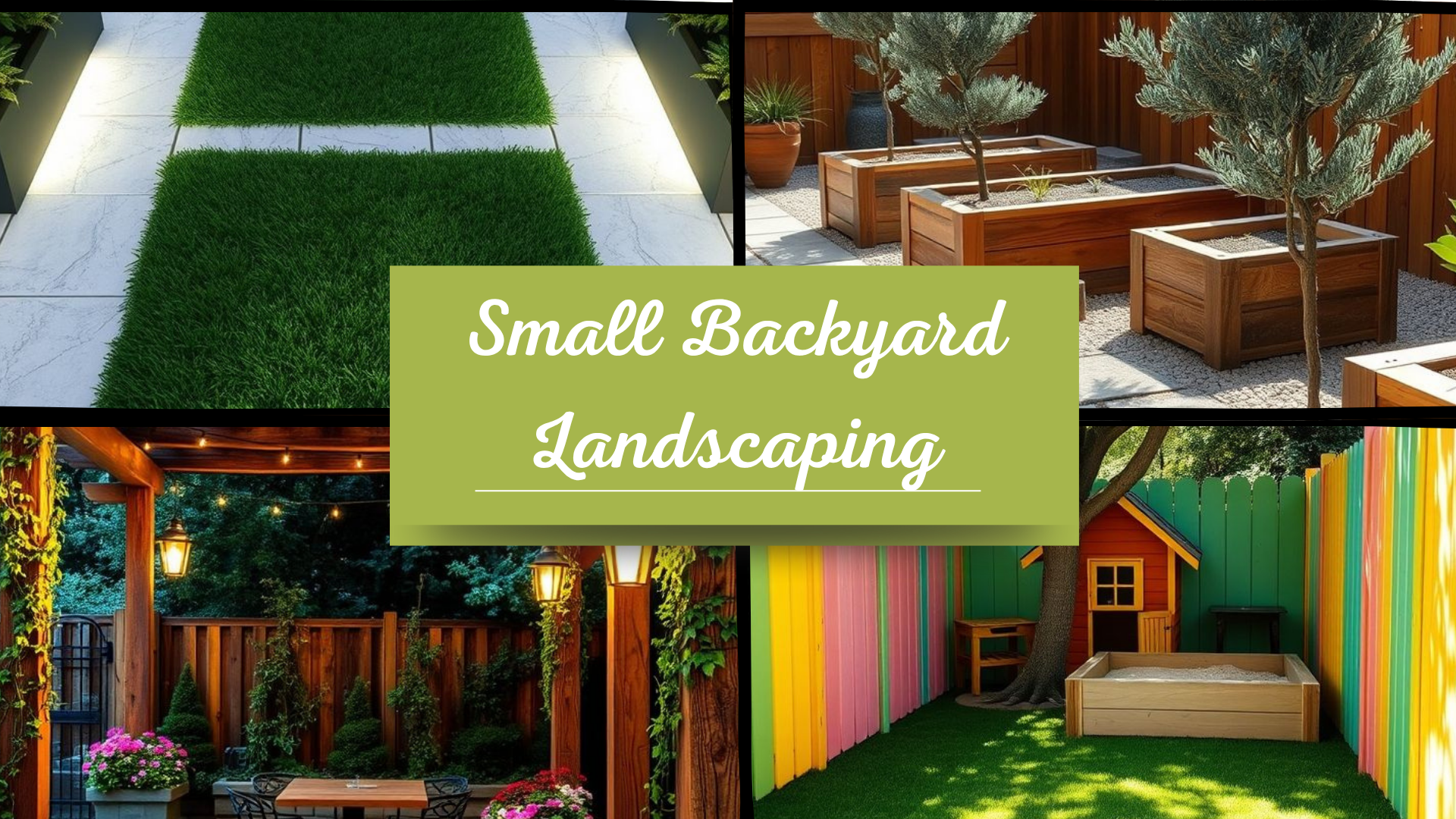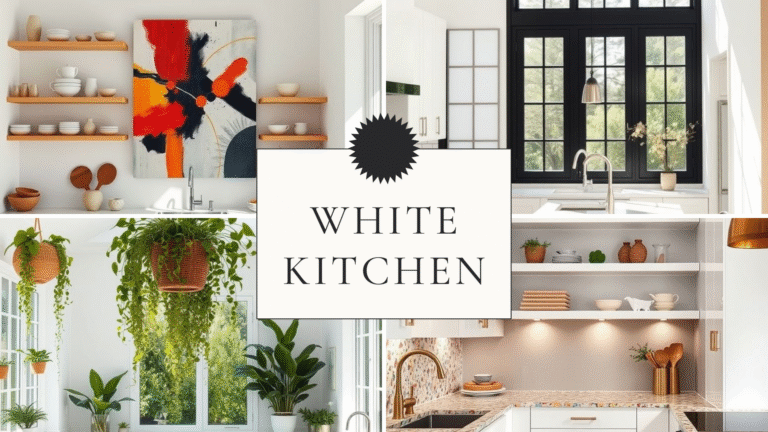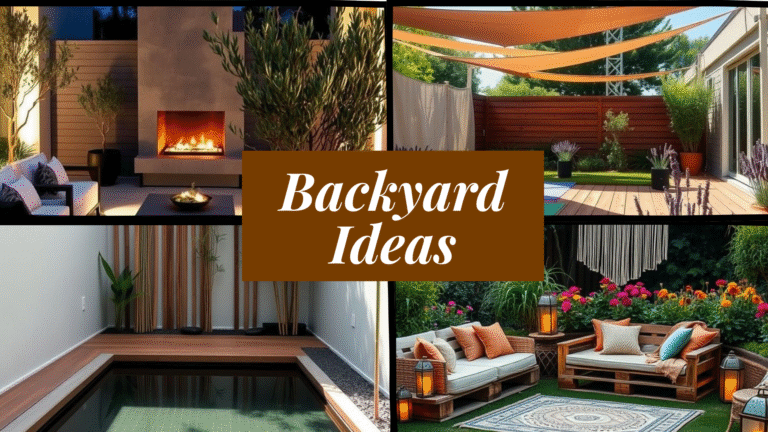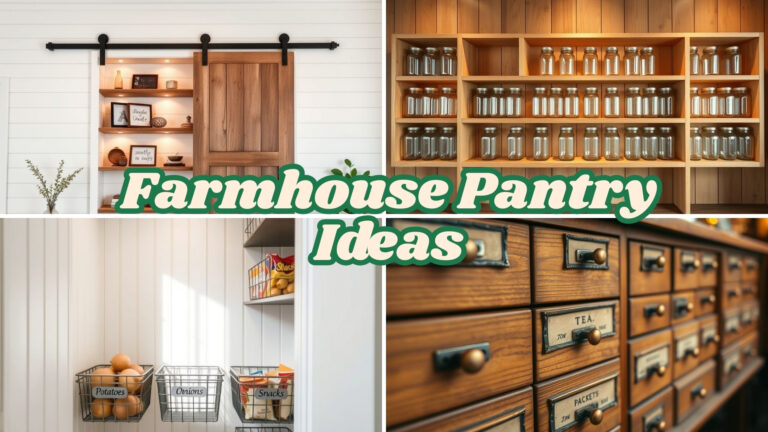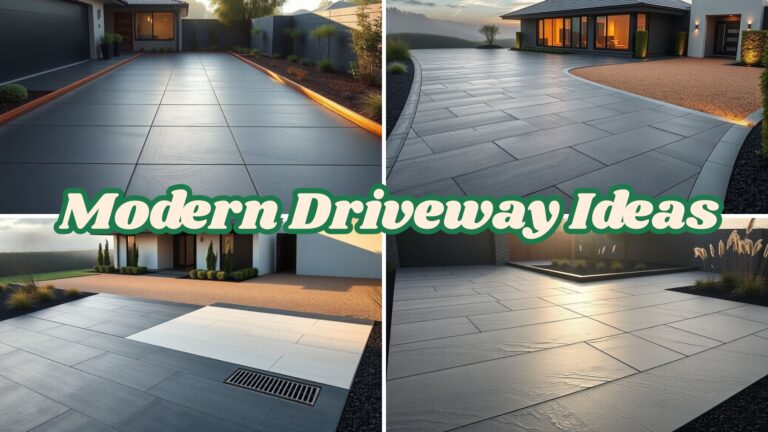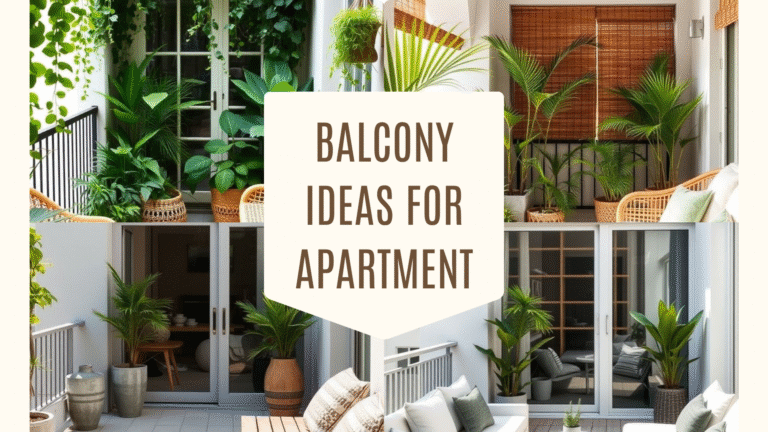Small Backyard Landscaping Ideas: Smart Designs for Tiny Yards
A small outdoor area can feel generous when you focus on flow, texture, and clever lighting. The goal isn’t to copy a showroom; it’s to build a space that fits your routines—morning coffee, weekend grilling, or a quiet pause after work. The following ideas lean on simple materials, smart layering, and habits you can actually keep up with.
Every section reads like a mini plan. You’ll see what to build first, what to soften with plants and fabrics, and how to make evenings feel welcoming without adding visual clutter. Mix and match details, but keep materials and colors consistent so the whole yard reads as one calm story.
Stone Patio With Built-In Bench and Lighting
A stone patio feels grounded and permanent, and a built-in bench makes that surface work harder without crowding it with chairs. The bench’s continuous line quietly frames the patio, creating a natural boundary that keeps furniture from drifting and gives people a clear place to gather. Because the seating is integrated, the floor stays open and easy to navigate.
Material choice matters. Choose stone that echoes your home’s exterior—warm sandstone for stucco, cooler bluestone for painted siding—so the addition looks intentional rather than new and shiny. Keep grout joints tight and even; neat joints do more for perceived quality than expensive stone ever could.
Comfort is what turns a seat into a hangout. Add firm, outdoor-grade cushions and a couple of textured throws; vary cushion thickness so the bench can serve as both lounging and perching space. A low table at arm’s reach keeps drinks off the floor and encourages people to settle in.
Lighting should be felt, not seen. Slim LED strips tucked under the bench lip wash the paving with a soft glow, making the surface legible without glaring into anyone’s eyes. A pair of spike lights can graze the stone face to reveal texture, while a single, dimmable lantern on the table gives you a cozy focal point.
Plants finish the scene. Place evergreen structure—like boxwood domes or dwarf olives—behind the bench to form a year-round backdrop, then seasonally switch in pots with herbs or color. If privacy is needed, a narrow hedge or a slatted screen with climbers adds enclosure without boxing you in.
Think maintenance from day one. Use sealed cushions with removable covers, choose non-staining joint sand, and plan a quick quarterly routine: rinse the stone, wipe the lighting channels, and refresh plant mulch. Small, regular care keeps the patio crisp without weekend-eating chores.
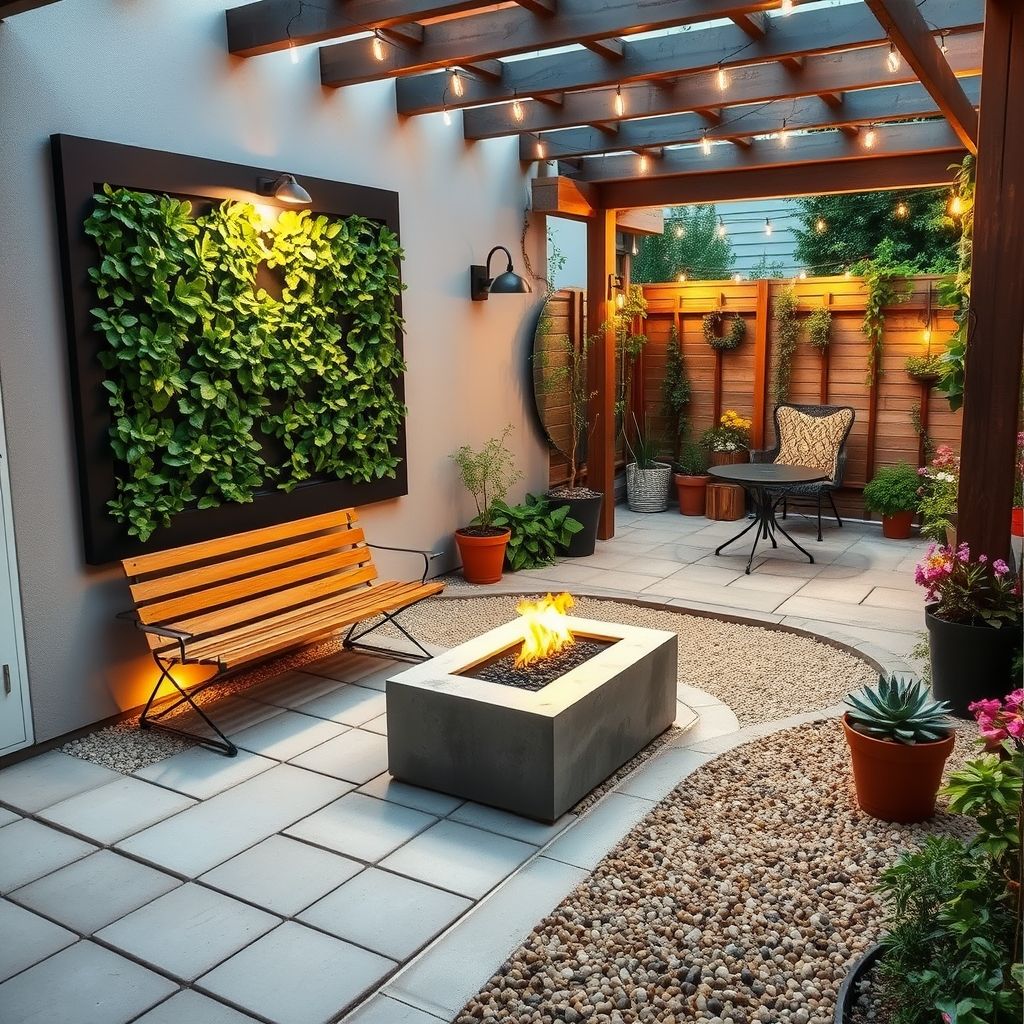
Backyard Garden Room With Framed Archway Entrance
A framed arch signals a threshold—step through, and life slows down. It gives your yard a sense of arrival and organizes circulation so even compact spaces feel purposeful. The arch also creates a perfect spot for a tiny ritual: a bell, a wind chime, or simply the habit of pausing for a breath.
Build the structure to be plant-friendly. A powder-coated steel or cedar arch handles weather and gives climbers something to grip. Keep the opening generous so the passage feels welcoming rather than pinched, and set the posts in line with a path so movement is intuitive.
Planting sets the mood. Choose scented, manageable climbers—star jasmine, climbing roses, or passionflower—so the approach feels lush without turning into pruning homework. At ground level, use low mounds and soft groundcovers to blur the edges and lead the eye inward.
Inside the “room,” edit ruthlessly. One bench, one side table, and layered pots are enough. Leave breathing space around the seating so the area reads calm and considered; clutter is the enemy of relaxation, especially outdoors.
Underfoot, keep it clean and quiet. Decomposed granite or fine gravel compacts well, drains fast, and produces a pleasant crunch. If you prefer solid footing, a small herringbone brick pad inside the arch delivers classic texture without looking busy.
Light it to feel like dusk, not daylight. A small, shielded sconce on the arch and two low path markers are all you need. The aim is to trace shapes and guide steps, keeping the night sky and plant silhouettes as the main show.

Backyard With Curved Edging and Layered Planting
Curved borders soften boxy plots and make a yard feel wider by pulling the eye along a gentle S-curve. That movement creates depth, which is especially valuable in tight spaces. The trick is to keep curves generous; tight wiggles look fussy and are harder to maintain.
Layering brings instant richness. Place taller shrubs or ornamental grasses at the back, mid-height perennials in the middle, and low groundcovers at the front. Repeating two or three foliage colors—silvery, glossy green, and burgundy—keeps the scheme cohesive while still varied.
Underlay with good bones. Steel or stone edging holds the curve exactly where you set it and keeps mulch from wandering onto paths or lawn. A consistent mulch color unifies different plant textures and makes the curve read clearly from the house.
Paths invite exploration. A stepping-stone ribbon tucked just inside the border lets you move through the planting for maintenance and slow strolls. Keep stones large enough for secure footing, and use a limited pattern so the path supports the curve rather than competing with it.
Night brings a new personality. Stake subtle path lights along the inside arc to trace the shape, and add one or two uplights to graze a specimen grass or small tree. You’ll get depth and drama without resorting to bright fixtures.
Plan for growth and ease. Choose plants with overlapping bloom times and strong foliage so the border looks good beyond peak season. Group by water needs and use drip irrigation; when plants share habits, maintenance becomes a quick, satisfying tune-up instead of a puzzle.
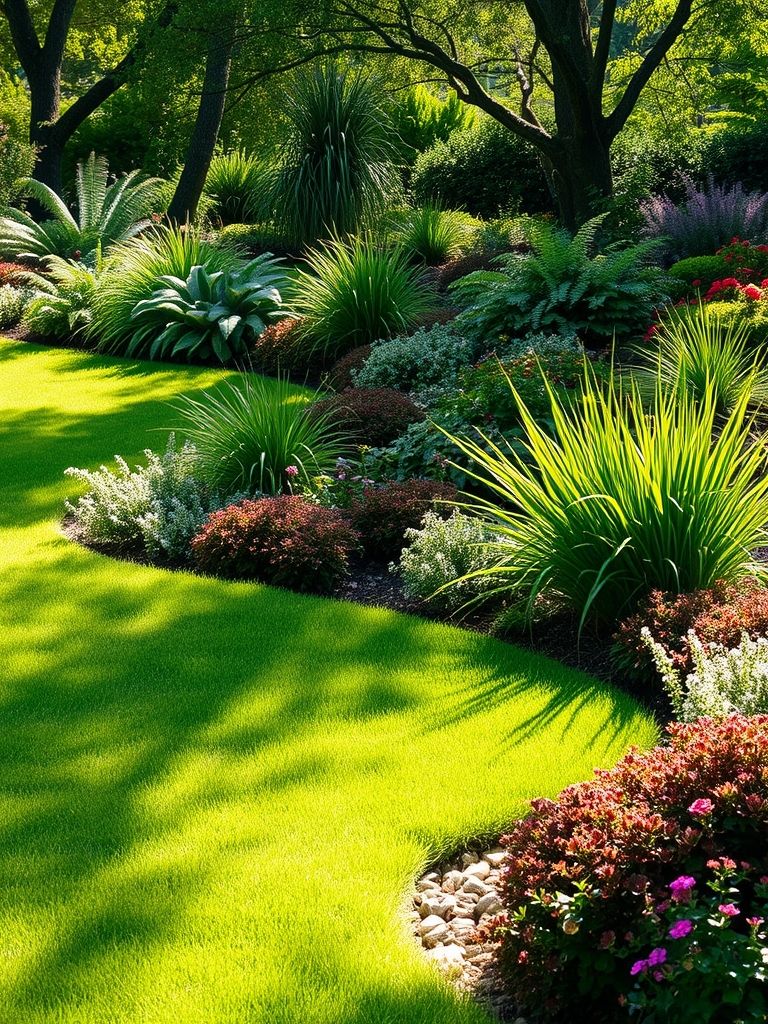
Backyard With Vertical Green Wall and Water Feature
A living wall turns a flat fence into a lush backdrop and frees up precious floor space. In small yards, that vertical green plane becomes the “view,” transforming the entire experience of being outside. It also helps soften hard materials and urban edges.
Start with the system. Modular panels with built-in irrigation take the guesswork out of watering and make replacements painless. Put thirstier plants near emitters and tougher ones—like ferns, heuchera, or philodendron—at the edges where conditions shift.
Keep the palette simple. Two or three textures, repeated across the wall, look calmer than a swap-meet of species. Dark cladding or paint behind the plants deepens contrast and makes greens pop without extra decor.
Sound is part of the design. A slim wall-mounted cascade or spout adds gentle white noise that masks traffic and makes the yard feel private. Place a bench or two opposite so people can actually sit and enjoy the movement and sound.
Light with restraint. Uplights at the base and a soft wash across the water feature bring the wall to life after sunset. Avoid spots that shine directly into eyes; the goal is to animate leaves and catch water sparkle.
Maintenance should be predictable. Choose species appropriate for your sun exposure, set a seasonal feeding schedule, and design access points so you can swap a plant in minutes. When care is easy, greenery stays lush rather than becoming a guilty to-do.
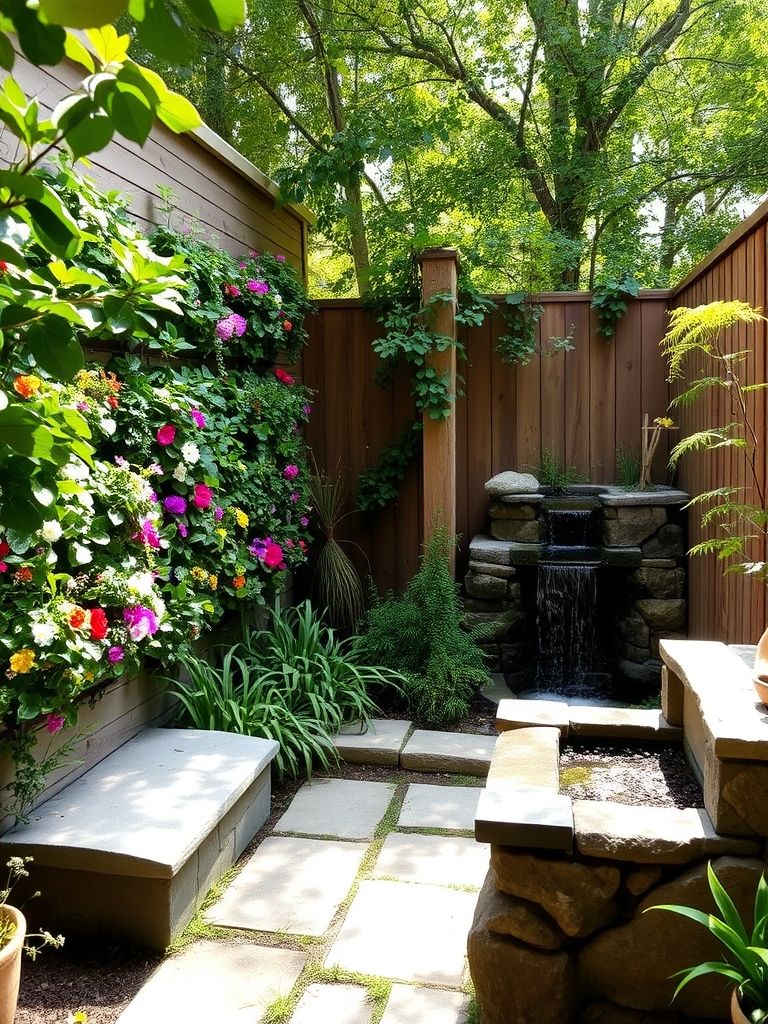
Boho Vibes With Macramé, Lanterns, and Potted Greenery
Boho works because it’s layered, relaxed, and personal. Start with a neutral outdoor rug to anchor the zone, then add a low table and a mix of floor cushions and lounge chairs. The different heights make the space feel collected rather than staged.
Macramé adds vertical rhythm. Hanging planters lift greenery off the floor, drawing the eye up and freeing circulation space. Stick to a small palette of pot finishes—terracotta, matte white, and rattan—so the mix feels intentional.
Textiles do the heavy lifting. Patterned pillows in earthy tones, a cotton throw for cool evenings, and a linen table runner instantly warm the scene. Keep patterns cousins, not strangers; repeating one color across pieces ties everything together.
Light for glow, not brightness. Cluster lanterns at varying heights and add a few LED candles for safe flicker. One string of café lights overhead can define the zone without competing with the lanterns.
Plants should be forgiving. Snake plants, pothos, and ferns deliver texture without constant fuss. If the area is sun-blasted, swap in hardy options like jade, aloe, or bougainvillea; the vibe remains boho, just sun-tuned.
Edit regularly. Boho can slide into clutter if you never rotate. A monthly refresh—launder covers, swap a plant, remove one item—keeps the space airy and alive while preserving that collected charm.
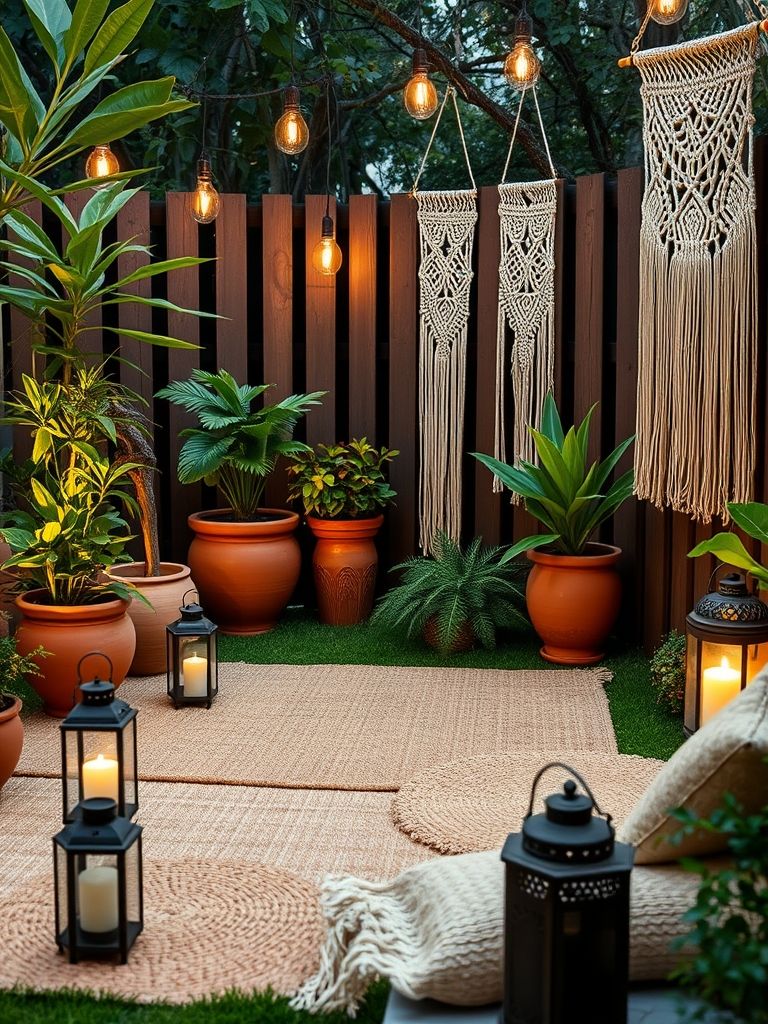
Chic Gravel Courtyard With Fire Pit
Gravel is the secret weapon for fast, stylish outdoor rooms. It’s permeable, easy to install, and visually calm when used in a single, consistent color. With a compact, smokeless fire pit at the center, you’ve got a four-season social hub. Contain the surface. A slim steel or stone edge keeps gravel crisp and prevents migration into beds and paths. Rake it to an even depth and compact lightly so chairs sit level and footsteps feel stable.
Keep furniture sculptural. Metal or stone-framed chairs echo the pit’s geometry and stand up to weather. A single statement planter or a low, linear bench provides mass without cluttering the field of gravel. Think about comfort. Have a small stash of wool throws in a storage box, and consider a couple of low side tables so drinks and marshmallows aren’t on the ground. These small touches extend hang time dramatically.
Light simply and low. A trio of low spikes grazing the fire pit area and one wall-mounted sconce for arrival is enough. The fire itself should be the star; your lighting just needs to make edges legible. Maintenance is refreshingly minimal. Rake out footprints, top up gravel annually, and empty the ash pan. That’s it—and your courtyard stays sharp through seasons without a fuss.
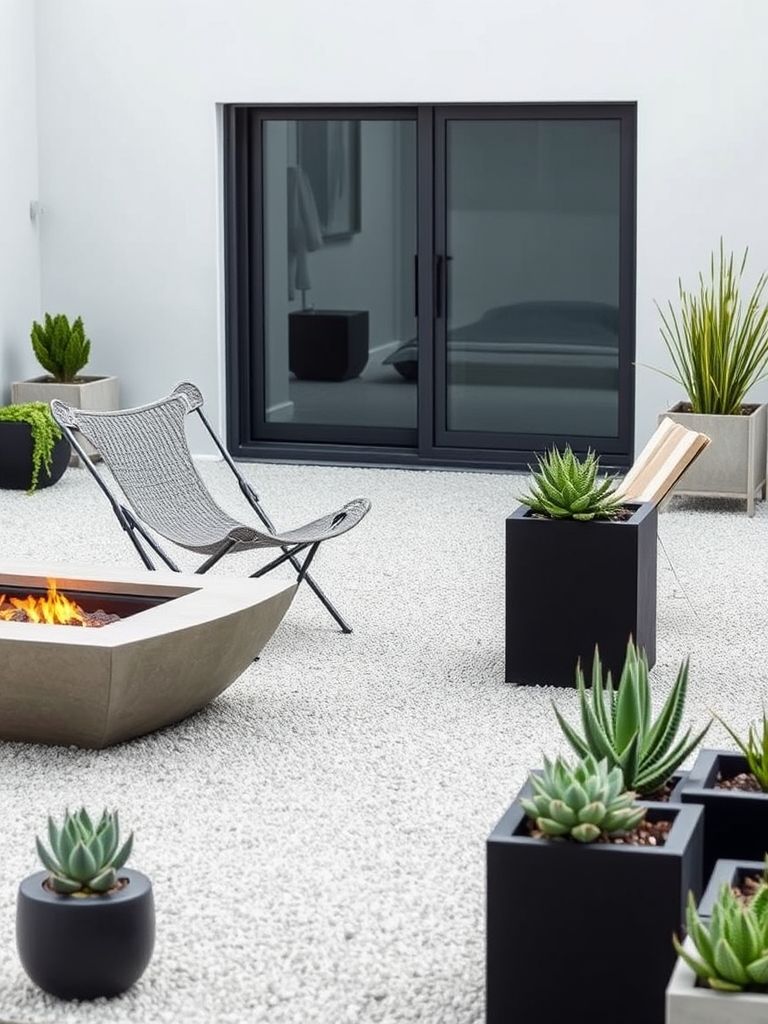
Colorful Garden Nook With Wildflowers and Pebble Path
Color feels happiest in small doses with a clear plan. Pick a tight palette—say coral, yellow, and purple—and repeat it in flowers, a painted chair, or a glazed pot. The repetition makes the nook look curated rather than chaotic. Let wildflowers carry the vibe. Use seed mixes suited to your climate, but plant in patches with mulched gaps so you still have room to place a petite bistro set. Those intentional voids make the color feel designed.
The path should meander. A narrow pebble ribbon invites slow steps, and the gentle curve adds a sense of discovery even in a tiny footprint. Keep the stones smooth and set them in a restrained pattern so the path supports, not competes with, the blooms. Add a single accent for cohesion. Match the boldest flower with a painted stool or pot—one echo, not ten—and the whole nook snaps into focus. It’s a simple designer trick that costs almost nothing.
Shade helps at midday. A lightweight sail or a round umbrella tempers glare and protects petals in peak summer. Choose a neutral fabric so the color story remains anchored in the planting. Tend with a light hand. Trim only what blocks access, deadhead a little to prolong blooms, and allow some self-seeding. The goal is lively and slightly wild, not manicured into submission.
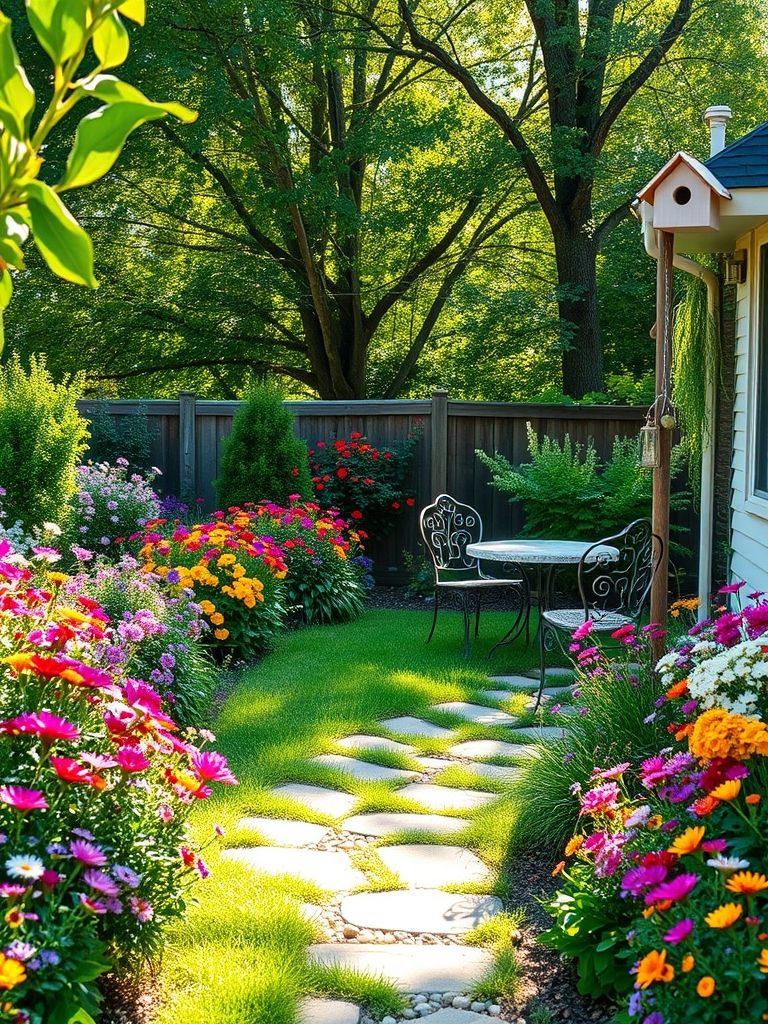
Corner Lounge With Wooden Deck and Built-In Planters
Corners make natural destinations. A small, raised deck panel defines the spot, lifts you above damp ground, and lets you run clean lines for furniture placement. Built-in planters along the edges act as railings and soften the geometry. Lay boards diagonally or in a herringbone to visually widen the corner. That pattern adds subtle movement without needing extra decor. Use rot-resistant species or composite so the platform stays low-maintenance.
Vary seating heights. A bench integrated into a planter, a deep lounge chair, and a couple of poufs serve different bodies and moods, making the lounge feel welcoming to everyone. A compact, low table keeps the center open. Lighting should be invisible but effective. LED tape hidden under the bench lip produces an elegant float, while one small sconce on the house wall marks the entrance. You gain ambience without a forest of fixtures.
Planting needs to be simple and structural. Choose evergreen mounds or grasses for year-round shape, then add one seasonal accent at a time. Keeping the palette tight makes the corner feel calm and grown-up. Think storage early. A lidded bench or a narrow deck box swallows cushions and throws in seconds, which means you’ll actually use them. When comfort is easy to deploy, the lounge earns its keep nightly.
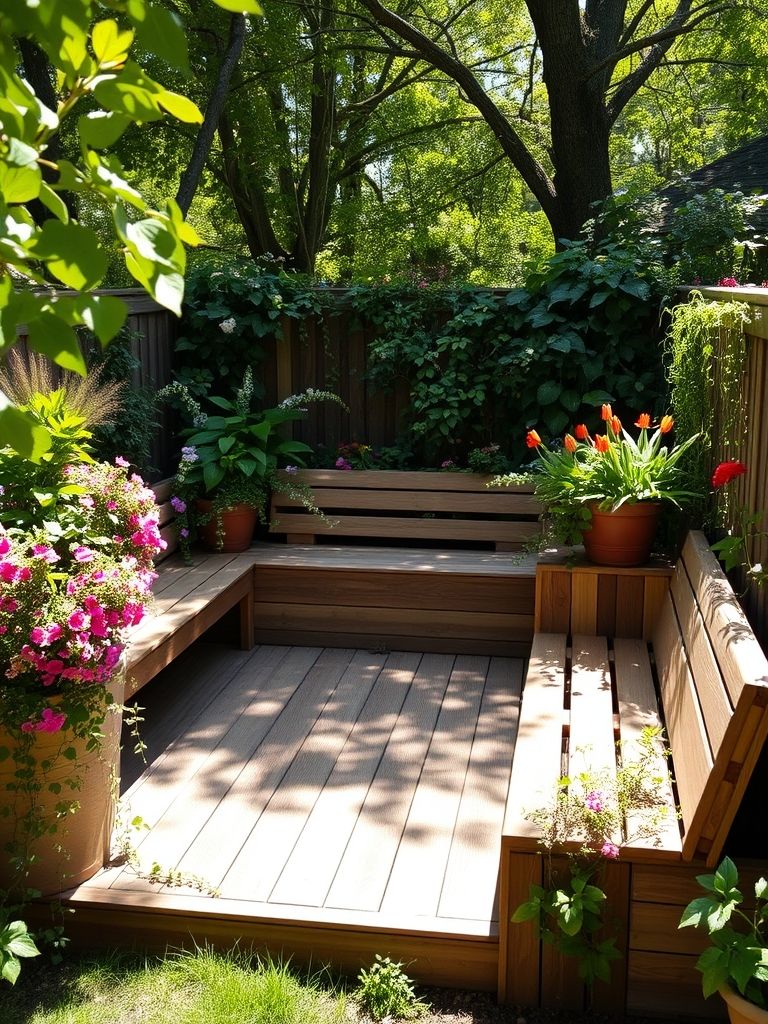
Desert Oasis With Cactus Garden and Sandstone Path
Desert style is about form, light, and shadow. Sculptural plants—golden barrel, agave, and prickly pear—become living sculptures, each set off by space and gravel. The look is serene, resilient, and surprisingly low-maintenance. Use pale sandstone or decomposed granite for paths to reflect heat and keep the palette sun-washed. Gentle curves guide the eye and help you give each specimen the breathing room it needs to read as an object.
Detail around each plant. A simple gravel “moat” or dark rock mulch ring creates contrast and reduces splash on spines and leaves. It also makes weed spotting immediate, which keeps maintenance quick. A small water element changes everything. A ceramic bowl or shallow basin draws birds and adds a subtle cooling effect without contradicting the dry garden aesthetic. In hot months, it becomes the quiet heart of the space.
Shade is comfort. A slatted pergola or a triangular sail throws patterned shade where you sit, letting you enjoy the garden at midday. Keep furnishings minimal—wood or powder-coated metal—and let the plants be the art. The care routine is straightforward. Infrequent, deep watering, rare pruning, and seasonal top-ups of gravel keep the garden crisp. It’s the kind of landscape that rewards restraint.
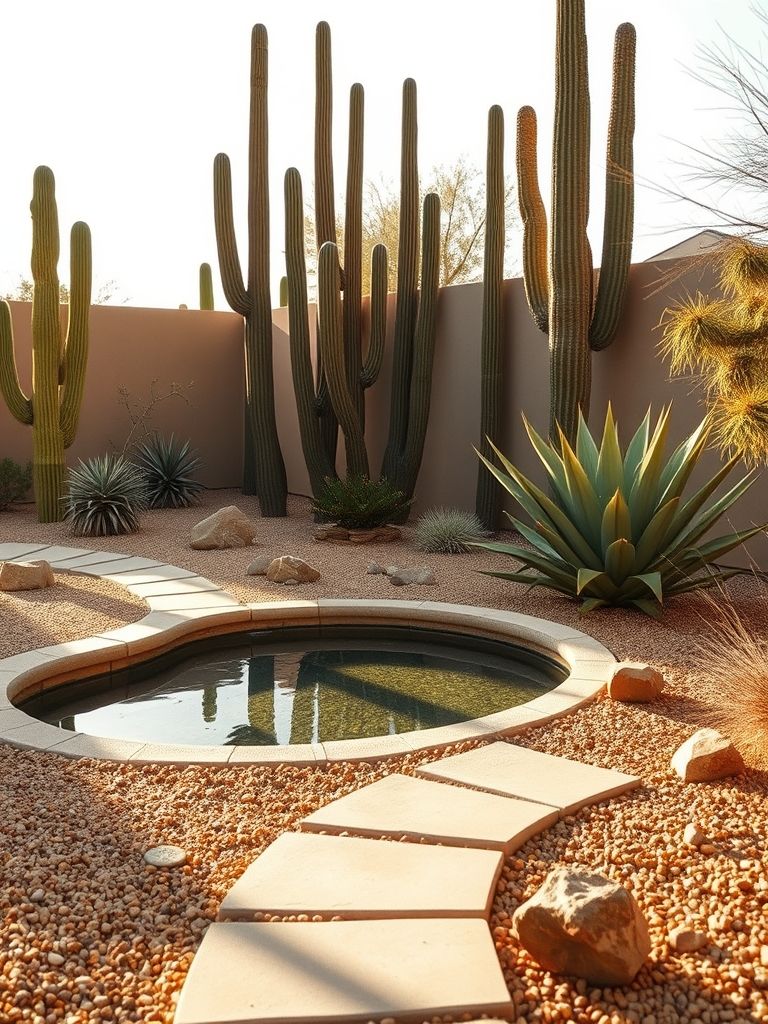
European Courtyard Style With Cobblestones and Ivy Walls
A courtyard is a mood: enclosed, intimate, a little timeless. Irregular cobblestones underfoot deliver that old-world texture and handle drainage beautifully. Keep the field one consistent tone so furniture and plants stand out. Give the walls life. Train ivy, climbing hydrangea, or creeping fig on trellis panels to protect masonry while greening the vertical plane. The soft leaf mass absorbs sound and frames the courtyard like a garden room.
Furniture should be petite. A round café table and two folding chairs leave walking space while encouraging face-to-face conversation. Zinc or aged terracotta pots carry the patina story without trying too hard. Add water for soul. A wall spout or a small tiered fountain adds a gentle soundtrack and becomes the natural focal point. Place it opposite the entry so you see and hear it the moment you step in.
Light like a bistro, not a stadium. A single strand of café lights overhead and a discrete sconce near the door are enough. The idea is to make stone gleam and leaves glow, preserving cozy shadows. Keep upkeep civilized. Sweep cobbles weekly, trim climbers lightly, and refresh pot plantings seasonally. Courtyards thrive on little, regular gestures—the kind you can do with a cup of coffee in hand.
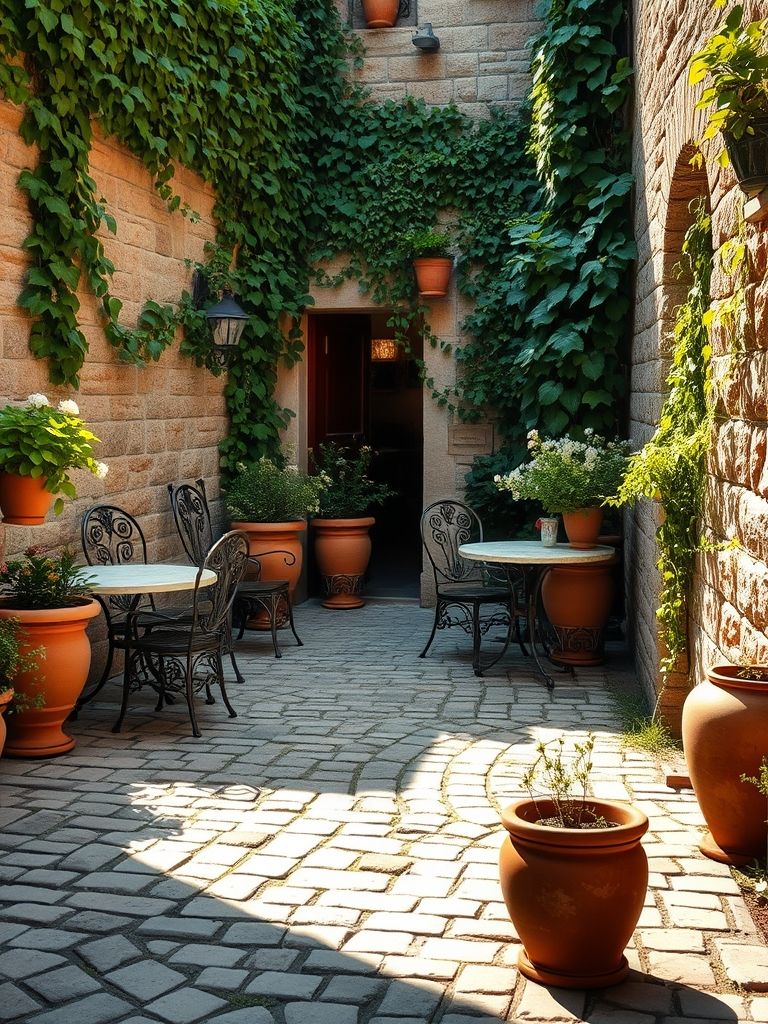
Japanese-Style Rock Garden With Raked Gravel
A Japanese-inspired rock garden is about restraint and rhythm. You’re composing with stone, shadow, and space rather than color and flowers. That quiet simplicity makes even a small corner feel purposeful and serene. Start with a limited palette: pale gravel, a few dark boulders, and one evergreen like pine or juniper. The contrast between light and dark sets the scene without extra decoration. Each piece earns its place.
Arrange stones in odd-numbered clusters and vary their heights so the grouping feels like a natural outcrop. Bury a third of each stone to make it look grounded rather than perched. It’s the quickest way to get authenticity. Raked gravel patterns become the “water.” Long, calm lines lead the eye toward a focal stone, while gentle swirls suggest eddies around boulders. Re-raking is a meditative five-minute reset, not a chore.
Keep furniture minimal. A single backless bench or a low timber platform invites short, mindful pauses rather than long lounging. Let light, breeze, and the crunch underfoot be the experience. Maintenance is light but regular. Remove fallen leaves, tidy edges, and trim your evergreen softly. A simple, steady routine preserves the garden’s stillness and makes it better with time.
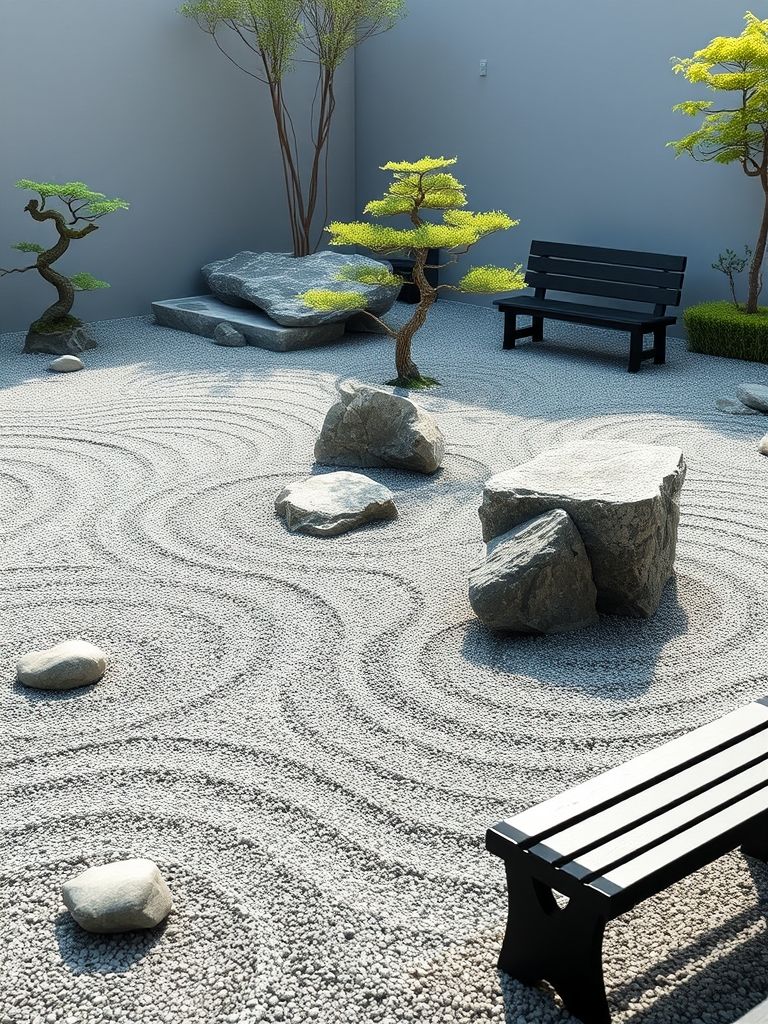
Lawn-Free Backyard With Pavers and Raised Beds
Ditching lawn frees you from weekly mowing and opens space for structure. Large-format pavers laid in a simple grid become clear walking lanes that look modern and stay low-maintenance. The gaps can host thyme or gravel for softness and drainage. Raised beds are the workhorses. They bring soil quality under control, keep roots warm, and save your back. Stagger their lengths so the layout feels designed rather than purely functional, and keep bed widths reachable from both sides.
Plan uses by bed: one for herbs, one for seasonal color, one for cut greens. Group plants by water needs so drip lines can run efficiently. When irrigation matches habit, care becomes almost automatic. Edges make or break the look. Steel, stone, or timber edging keeps pavers and infill tidy and gives the whole yard a crisp outline. Choose one edging material and repeat it everywhere for a unified feel.
Add a slim storage bench to swallow tools, gloves, and seed packets. When everything lives within arm’s reach, tending becomes a quick daily ritual rather than a weekend project. Convenience is what keeps gardens thriving. Evenings need gentle light. Downlights on fence posts and a couple of spikes in the beds make pathways legible and leaves glow. You’ll spend more time outside simply because the space invites you to.

Modern Geometric Lawn Design
If you keep some turf, shape it deliberately. Rectangles, circles, or a pair of staggered bands read clean and intentional, making small yards feel designed on purpose. The geometry provides instant order. Separate shapes with gravel ribbons or slim steel edging so the forms stay crisp. That contrast also reduces the amount of grass you water while keeping the cool, soft feel underfoot where it counts. It’s efficiency with style.
Anchor the layout with a single sculptural tree or a clipped shrub. One vertical element gives proportion and a subtle sense of hierarchy. Resist the urge to plant every corner; breathing space is part of the design. Hard furnishings should echo the forms. Low, streamlined benches and a simple table won’t fight the geometry. Keep finishes consistent—concrete, powder-coated metal, or pale wood—so the eye glides.
A narrow poured-concrete ribbon can serve as a “desire path,” visually connecting the shapes. It doubles as a dry, stable route in wet seasons and adds one more clear line to the composition. Lighting should outline rather than spotlight. A ground spike grazing the focal tree and low markers tracing a curve are enough. At night the garden becomes a quiet drawing in light and shadow.
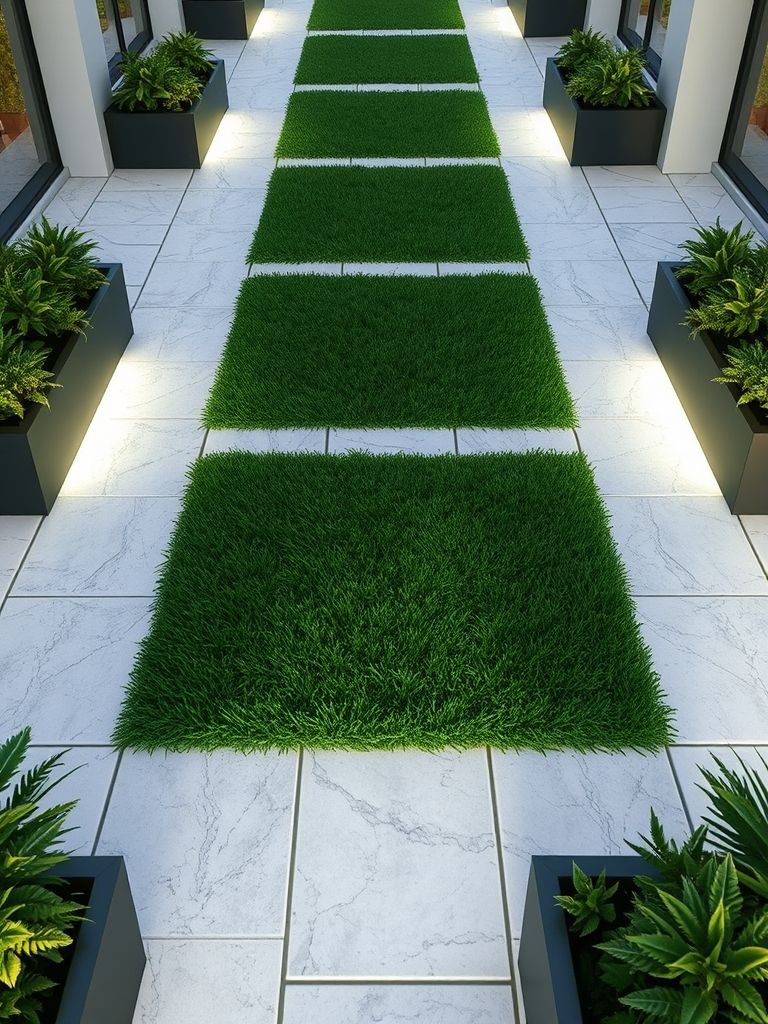
Pergola-Covered Dining Spot With String Lights
A pergola frames a dining zone and makes it feel like a room, not a table parked outdoors. Posts define edges, overhead beams create rhythm, and everything underneath gains a sense of occasion. It’s architecture without walls. Add a retractable canopy or outdoor curtains to handle glare and breeze. Shade you can control extends the space into hot afternoons and shoulder seasons. Choose neutrals so food and faces remain the stars.
String lights zig-zagged across beams deliver even, flattering illumination. Pair them with a dimmable lantern or two on the table so you can fine-tune mood. The goal is golden glow, not stadium brightness. Pick a wipe-clean tabletop—sealed wood, ceramic, or composite—and stackable chairs to simplify hosting. Comfort matters: a few washable cushions transform a quick meal into a lingering evening.
Soften the posts with planters or climbing vines. Scented choices like jasmine add romance without heavy maintenance. Keep pots in the same finish to avoid visual noise at the corners. Plan for storage within steps. A narrow console or deck box holds linens, candles, and bug spray. When the small things are close at hand, setting the table becomes frictionless, and you’ll actually dine outside.

Playful Backyard With Artificial Grass and Compact Treehouse
Quality artificial turf offers year-round green and a soft landing zone for play. It’s especially handy in shade or high-traffic areas where natural grass struggles. A clean, single expanse looks calm and is easy to maintain.
A compact treehouse or raised platform adds adventure without overwhelming the yard. Keep the footprint tight, focus on sturdy railings, and use a small ladder or rope climb to maximize fun per square foot. Safety and imagination should both lead.
Create activity stations around the edges: a chalkboard panel on the fence, a low balance beam, a sandbox with a lid. By pushing play to the perimeter, you keep the center clear for running and rolling. Ground safety under play areas with rubber mulch or cushioned pavers. They drain well, dampen falls, and look tidy. A simple border keeps everything in place through seasons of energy.
Add cheerful color in measured doses—paint the platform’s trim, pick bright planters, or choose a striped outdoor rug under a parent perch. A few echoes of one color pull the zone together. Design for supervision without hovering. Place adult seating in shade with clear sightlines to every station. Everyone relaxes when comfort is built in for both grown-ups and kids.
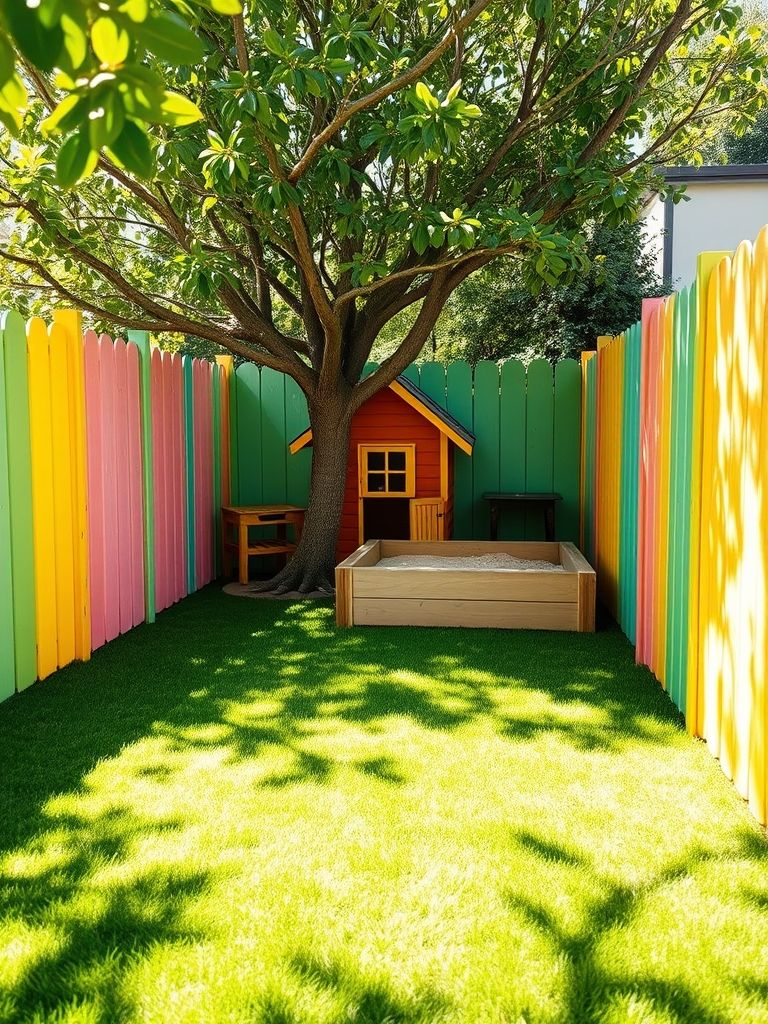
Small Space Backyard With Built-In BBQ Island
A narrow BBQ island along a boundary keeps circulation open while giving you a real cooking zone. Include only essentials: a compact grill, a stub of prep counter, and concealed trash. Simple beats sprawling in tight spaces. Clad the island in fire-resistant material that complements your house—stucco, brick slips, or fiber cement. A slim backsplash panel protects the fence and looks finished. Choose one metal finish for hardware so it reads cohesive.
Add a raised bar ledge perpendicular to the island with two stools. It doubles as dining and keeps guests chatting without crowding the cook. A tiny overhang makes perch space feel generous. Task lighting matters. A shielded sconce above the prep area and an under-shelf strip keep knives and temperatures visible after dusk. You don’t need more if your dining area has its own ambience.
Store smart. Hooks for tools, a magnetic strip for knives, and a shallow drawer for spices reduce back-and-forth to the kitchen. The fewer trips inside, the more effortless the evening feels. Ventilation and clearances are non-negotiable. Keep safe distances from boundaries, follow manufacturer guidelines, and add a small fan if air stalls. Good layout makes cooking pleasant, not sweaty.
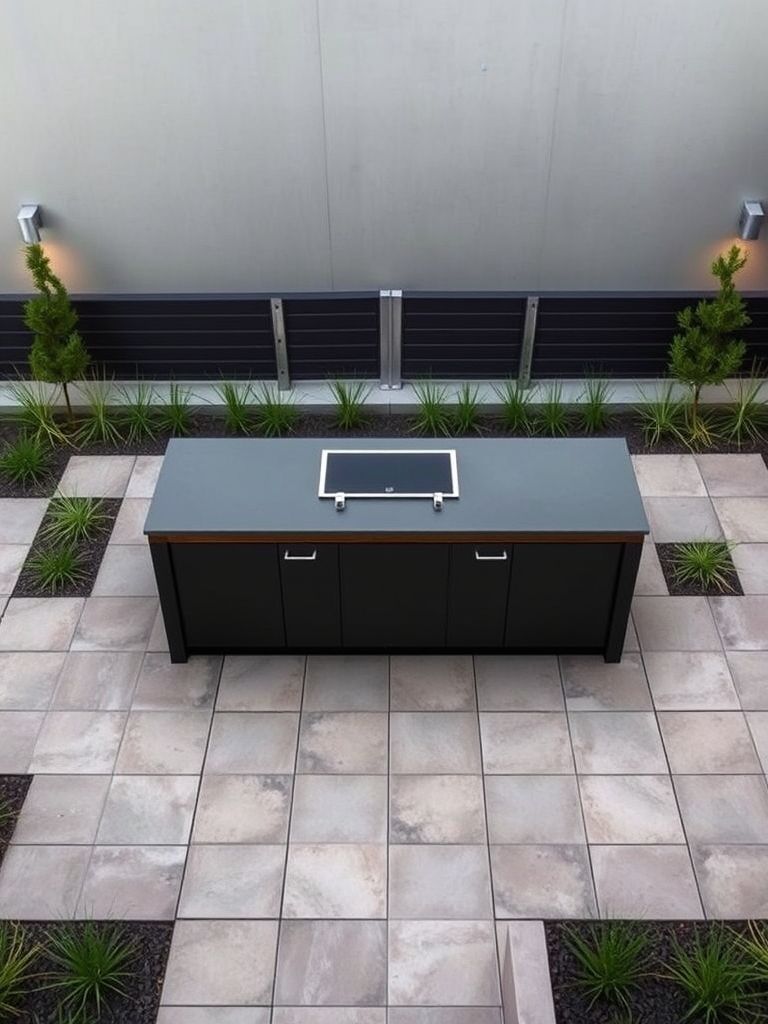
Space-Saving L-Shaped Planting Beds
An L-shaped bed hugs two edges, freeing the center for seating or play. That simple move makes a small yard feel larger by clearing the middle and giving the perimeter a strong, green frame. It’s space efficiency with softness. Graduate plant heights from the corner peak down each leg. Taller shrubs at the elbow, mid-height perennials in the middle, and low groundcovers at the ends create a natural flow. The eye reads the slope as intentional.
Keep the plant palette tight—three to five reliable species repeated for rhythm. Repetition calms the scene and simplifies maintenance. Seasonal pots can bring in temporary variety without complicating the base planting. Edge the bed with steel or stone for a crisp line that separates planting from paving. Clean edges are what make casual planting look designed. A consistent mulch color ties everything together.
Drop a compact bistro set into the open center. With the greenery wrapping two sides, the seating feels sheltered without heavy screens or walls. It’s a pocket retreat that doesn’t hog space. Install drip irrigation along both legs and a single timer. When watering is set-and-forget, plants thrive and you gain your evenings back. Efficiency keeps gardens beautiful.
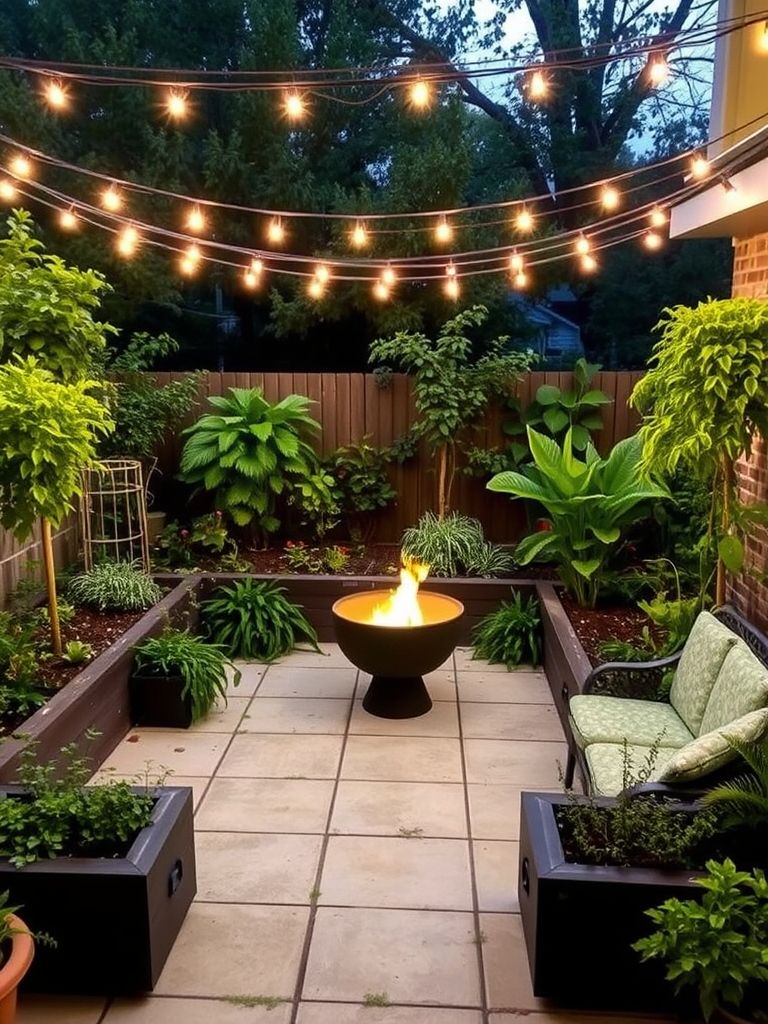
Tiered Garden Beds With Wooden Planters
On a slope, tiers turn chaos into utility. Stepped wooden planters create level pockets for growing and a pleasing stair-step silhouette. It’s structure that pays you back in harvest and order. Choose rot-resistant wood and line interiors to extend life. Keep risers consistent in height so the composition reads tidy. A simple stain matching nearby fencing unifies the whole scene.
Assign each level a role: sun lovers up high, herbs or lettuces mid-slope, and shade-tolerant choices at the bottom. Grouping by light makes plants happier and care simpler. Labels help, especially at harvest time. Add short stair treads between tiers for safe access and visual rhythm. A slim handrail can be elegant and practical, especially after rain. Design it once; climb it daily with confidence.
Cap the top tier with a bench board. It offers quick seating and an extra surface for baskets or tools. Those small conveniences keep you working comfortably rather than juggling gear. Run irrigation lines neatly along backs of planters and hide manifolds behind one access panel. A little routing effort upfront keeps the look calm and the system easy to service.
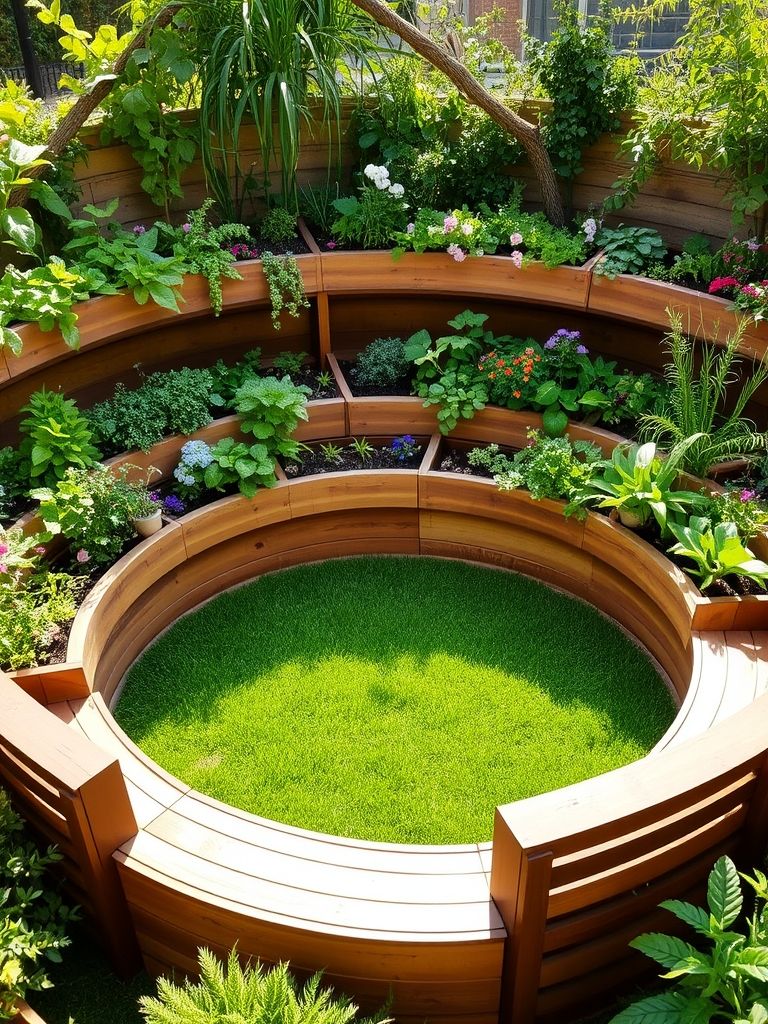
Tropical Escape in a Compact Space
Tropical style is all about lush leaves and gentle movement. Layer big foliage—banana, philodendron, bird of paradise—so the space feels enveloping. The overlapping shapes create privacy without a fence. Keep the color story deep green with one hot accent like fuchsia or turmeric. That single pop, echoed in a cushion or planter, makes the greenery feel even richer. Too many accents dilute the mood.
Screen utilities with bamboo panels or slatted wood for instant resort texture. A narrow bubble fountain adds sparkle and soft sound without taking space. Water plus leaves equals transportive calm. Choose low, airy furniture—woven stools, a slender daybed, a petite side table—so you can slip between plants. Everything should feel easy to move for seasonal tweaks and cleaning.
Evenings deserve glow. Rattan lanterns, a couple of low spikes aimed through leaves, and a single overhead string line are enough. Light the foliage, not the fixtures, and the space becomes magic. Care is mostly about moisture and feeding. Mulch thickly, mist on hot evenings, and give a gentle fertilizer in the growing season. A small, steady routine keeps the jungle vibe thriving.
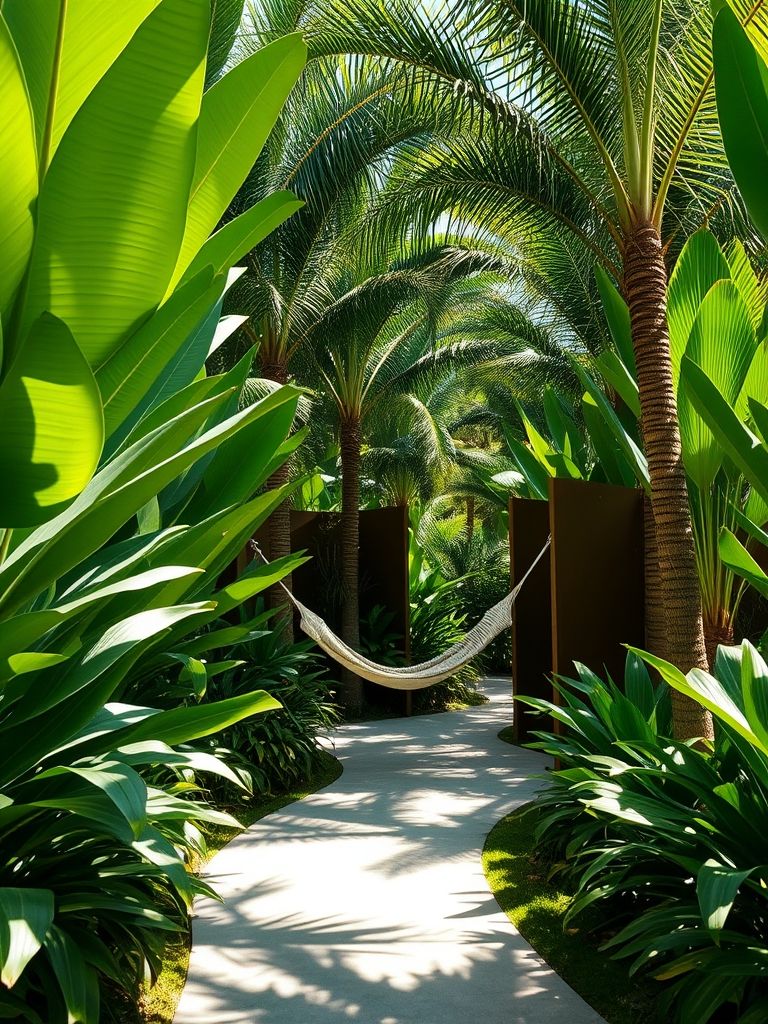
Zen-Inspired Minimalist Backyard With Gravel and Bamboo
Start with a calm ground plane—pale gravel or decomposed granite—so footsteps crunch and light scatters gently. The simplicity sets a restorative tone and makes every object matter. Empty space is a design tool here. Place a trio of boulders with clear relationships in scale and angle. Echo their geometry with a slim timber bench or a low platform. The dialogue between stone and wood becomes the quiet focal point.
A line of clumping bamboo forms a living wall that sways and whispers. Choose non-running varieties to avoid spread and place a root barrier just in case. Movement in the leaves becomes your “art.” Keep decor to a minimum—no gallery of pots or ornaments. Let shadow, breeze, and the rake lines do the expressive work. The restraint reads as luxury because nothing fights for attention.
Add a single water basin near the seating for a small ritual. The sound of a ladle, the coolness on your hands, and the way light hits the surface slow you down in seconds. It’s simple and surprisingly powerful. Maintenance is meditative: rake, prune, reset. Ten mindful minutes restore order and reset your headspace. The space gives back exactly what you give it—calm, clarity, and ease.

Conclusion Small Backyard Landscaping
Great outdoor spaces aren’t about square footage; they’re about clarity. Pick a direction—Zen, tropical, geometric, boho—and repeat it with conviction in materials, forms, and light. Keep plants structural first and colorful second, scale furniture to the footprint, and use glow rather than glare after sunset.
When your yard supports how you actually live—quick breakfasts, kid play, short resets, unhurried dinners—it stops being a weekend project and becomes a daily habit. Start with one corner, finish it well, and let the rest of the space rise to meet that standard.

